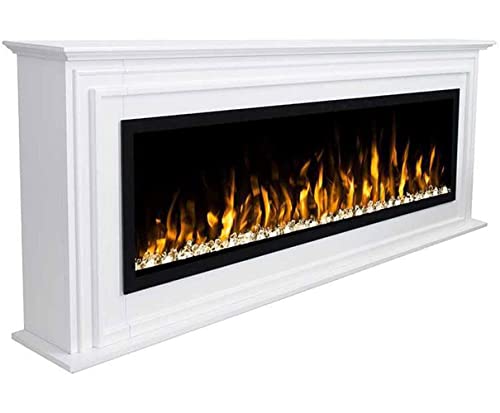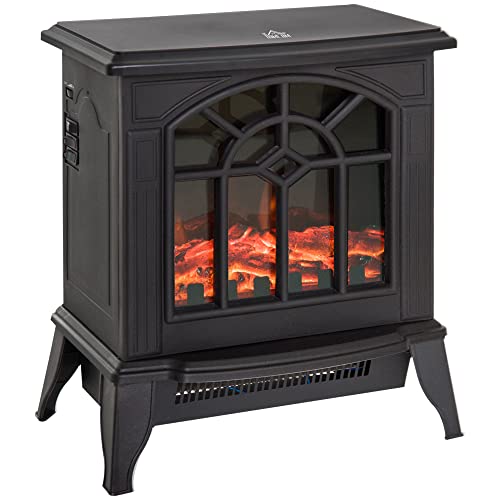Undeniable Proof That You Need Bioethanol Fireplace
페이지 정보

Ella
2024-12-07
-
44 회
-
0 건
본문
 The Benefits of an Ethanol Fireplace
The Benefits of an Ethanol FireplaceEthanol fireplaces can be a fantastic alternative to gas or wood fires since they don't require a chimney or flue. They don't create smoke or ash, nor do they create a mess and are able to be easily moved from one home to another.
Only use bio-ethanol on burners designed to burn the fuel. Other gels and liquid fuels may void your burner's warranty.
Cost
The cost of a fireplace constructed from bioethanol varies according to the style and model you choose. There are models ranging from a few hundred to several thousand dollars, but they're usually less expensive than a wood or gas fireplace. Certain models are freestanding, while others can be attached to a fireplace or recessed into the wall. Ethanol fires are also more environmentally green than wood-burning fires.
Bioethanol fires are popular because they provide a natural, beautiful flame that is free of any smoke or soot. They can be used in nearly every room, and are easy to maintain. It is recommended to only use bio-ethanol fuels that are specifically designed for fireplaces like these. Other kinds of fuel can harm the burner, which increases the danger of fire. In addition, you should not keep flammable items near the bioethanol fire.
Ethanol fireplaces are excellent for heating rooms, however they shouldn't be considered your primary source of heat. They are more efficient than wood-burning fire places and produce a lot of heat, around 2kW in average. This will not be enough to heat an entire home, but it will definitely warm up the smaller space.
In addition to the actual expense of an ethanol fireplace you must also consider other costs associated with maintaining the fireplace. The fireplace should be kept in a secure location away from pets and children. Always follow the manufacturer's instructions for adding fuel, then putting out the flame, and allowing the burner to cool.
A fireplace made of ethanol is a great alternative to a traditional wood-burning stove or electric fire. It has the primary benefit that it doesn't need a chimney. You can save money by not having to build and maintain one. It is also more secure than other types of fireplaces. It is still a good to speak with an expert before making a decision. This way, you can be certain that the fireplace will be installed properly and safely.
Environmental impact
A fireplace made of ethanol is a greener alternative to traditional fireplaces that burn wood. It is powered by bioethanol that is created by fermenting the sugar and starch components from materials from plants such as straw, corn and maize. The liquid biofuel is then further distilled to allow it to burn efficiently and cleanly. This kind of fuel can be considered an energy source that is renewable and does not emit harmful smells or emissions. In addition, it is also free of smoke and soot, making it a safer option for your home as opposed to other kinds of fires.
Ethanol fireplaces aren't required to have venting and chimneys They can be installed in nearly any room of your home. They are easy to use and most models include at least one remote control. A lot of models come with a built-in system of cooling to stop the fuel from becoming too hot. They can be used as a primary source of heat or an additional heating unit. They are also a great option for those living in condominiums or apartments.
Bioethanol fireplaces produce low levels of odours, which makes them an excellent choice for homes with those who suffer from asthma or allergies. This type of fireplace is safe to be used in a nursery or a child's room. It is important to keep in mind that these fireplaces must be kept a safe distance from objects that ignite, like furniture and curtains.
One of the biggest advantages of a fireplace made from ethanol is its ease of use. It is easier to install than a fireplace that burns wood and doesn't require complicated electrical connections or installation. Additionally, the fuel in liquid form can be stored in a portable tank so that it can be easily moved from room to room. This allows you to relax in the warmth of a fireplace, without having to deal with the mess of cutting up the wood, putting it in a stack and cleaning the wood.
A bio ethanol fireplace also produces very little pollution. This makes it an ideal choice for those who are concerned about the environment. In addition, these fireplaces are an excellent way to save energy and money.
Safety
A bioethanol fireplace could be a safer alternative to an open flame. They are easy to operate, create less smoke and burn cleaner than other alternatives. Like all fireplaces and other fire-producing devices they can be dangerous if used improperly. These fireplaces require special attention and care, which is why it is important to read the instructions carefully and follow them strictly.
If you're using a bioethanol fireplace, be sure to place it in a room that is well-ventilated and away from any other combustible material. Also ensure that pets and children are kept away from the fireplace. Don't move it while the fire is still burning. This could trigger an explosion.
Bio ethanol fireplaces may not be as dangerous as gas or wood fireplaces. However there are some guidelines for safety in order to ensure that they are safe. Keep all flammable objects at least 1500mm away from the burner and avoid touching it while the flame is burning. It is also important to never refill a fire with non-approved fuel.
The process of burning bio-ethanol fireplaces is extremely secure, particularly if you follow the instructions. The fuel is pumped through the vapour-accelerator, where it evaporates before being ignited with filament. This method of combustion ensures that the fuel is completely combusted, which eliminates smell and harmful substances like dioxins and furans.
Ethanol fireplaces can be hazardous when not properly used and it is essential to follow the manufacturer's instructions when installing and operating them. Moreover, they should be kept away from combustible materials such as curtains and newspapers. They should be kept a away from other household appliances and should not be placed close to sleeping animals or children.
A bio-ethanol fireplace has the primary benefit that it doesn't release any harmful odours or fumes. This makes it a safer option for homes with pets or small children. They're also more convenient than traditional fireplaces, since they don't require a chimney and do not cause carbon monoxide poisoning. These fireplaces offer a variety of advantages, such as the ability to put them wherever you want and move them around.
Installation
A bioethanol fireplace can provide warmth and ambiance to a space. They come in a variety of styles and can be installed in different ways. They can be wall-mounted, built-in, freestanding, or transparent. But, it is important to go through the installation manual of a particular fireplace before installing it. This will ensure that you don't have any issues with the installation and that your fireplace is safe to use.
Installing a bioethanol stove is fairly simple. It involves constructing a frame in the wall to accommodate the fireplace, and then fitting the burner into it. The frame should be made of an unflammable material. This will prevent the burner from burning the wall. This also helps prevent the flame spreading to other parts in the room. The frame should be fixed to the wall using appropriate screws and dowels.
As opposed to other kinds of fireplaces ethanol fires do not require a chimney nor a flue. This makes them cost-effective for homeowners. They can be placed in any space and easily moved. Additionally, they do not emit any harmful gases.
When properly used, bioethanol fireplaces are very safe. But as with any fire, it should be kept away from surfaces that are flammable and children. Additionally the fuel should be stored in a safe location and the fire extinguished before refilling it.
Ethanol fireplaces don't produce any soot or ash, and they are easy to clean. They are a great option for those who are concerned about the environmental impact of traditional wood-burning cheap fireplaces. Ethanol fireplaces are a great alternative to electric or gas fireplaces.
 Bioethanol fireplaces are an excellent addition to any home. However they shouldn't be used as the sole source of heating. They are designed to provide warmth and create a cozy environment however they aren't powerful enough to heat an entire house. Hiring an expert to set up your bioethanol fireplace is the most efficient way to go.
Bioethanol fireplaces are an excellent addition to any home. However they shouldn't be used as the sole source of heating. They are designed to provide warmth and create a cozy environment however they aren't powerful enough to heat an entire house. Hiring an expert to set up your bioethanol fireplace is the most efficient way to go.